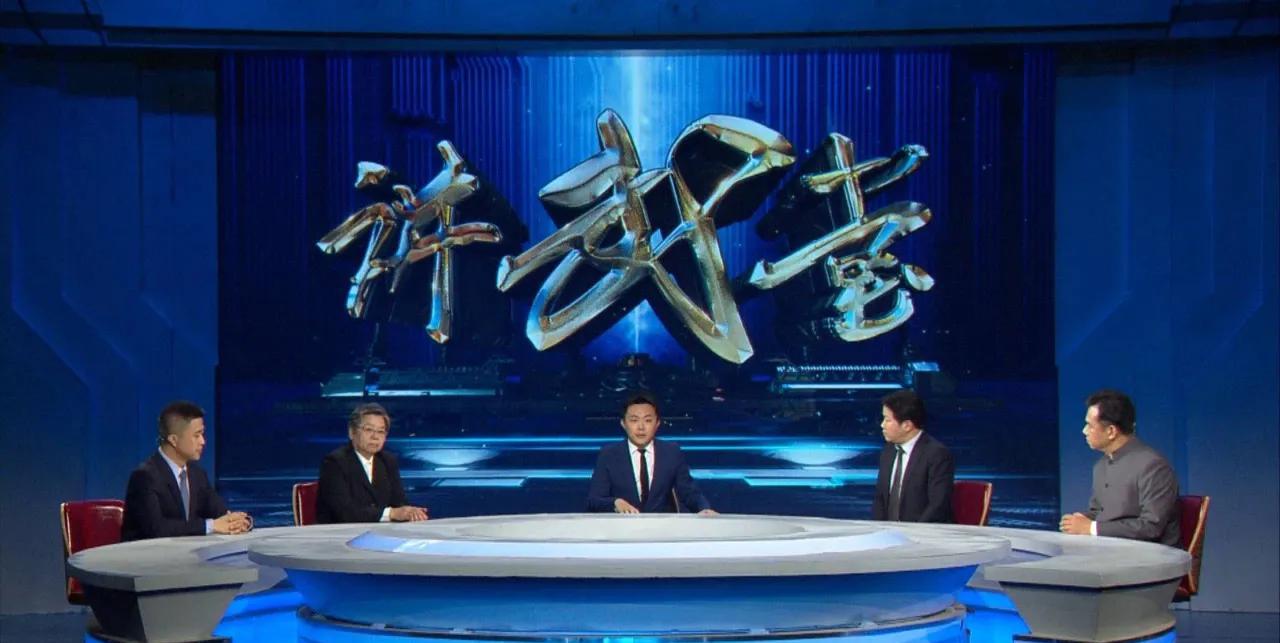Video loading...
Bloody battle,
The anti-Japanese battlefield ushered in a comprehensive counteroffensive,
They took the initiative to attack and smash the Japanese conspiracy.
Tit-for-tat,
They take the overall situation into consideration and strive for peace,
Play the rousing song of the northern retreat.
Approaching a tragic and glorious war years,
Reminisce about the immortal iron-blooded legend of the heroes of Dongjiang.
At 17:54 on Sunday, May 9, CCTV-7 "Tang Wu Tang" will broadcast the fourth episode of the series "Beacon East River" celebrating the 100th anniversary of the founding of the Communist Party of China, "Bloody Counterattack".

This episode is invited
Lu Yong, an expert in military history
Liu Shuai, instructor of military history at the National Defense University
Military history expert Zuo Yueyan
Director of the Guangdong Dongjiang Column Memorial Hall Wang Hongxing
Together with the host Liang Zhi
Tell the legendary story of the Dongjiang Column
In 1944, the World Anti-Fascist War was in the stage of large-scale strategic counteroffensive, and in order to reverse the passive situation, the Japanese army invading China launched the "No. 1 Operation" aimed at opening up the mainland communication line. How will the Dongjiang Column, which fought bloodily behind enemy lines in South China, continue to write the legend of iron blood under the new situation?
01 Exciting strategic counter-offensive
Between April and December 1944, the Japanese army launched the "No. 1 Operation", and the Dongjiang Column formed a northward anti-Japanese advance team with part of the main force of the third brigade, led by Wu Qiang, to advance into beijiang to carry out anti-Japanese guerrilla warfare in the Beijiang area.
Wu Qiang is a fierce general of the Dongjiang Column and a legend. As a teenager, Wu Qiang formed a hunting team with other hunters and practiced a good marksmanship. Wu Qiang participated in the Battle of Taierzhuang and the Battle of Xuzhou, and later returned to his hometown as the chief of staff of the Dongjiang Column.
On August 10 and 11, 1945, Commander-in-Chief Zhu De issued seven consecutive orders, ordering the anti-Japanese troops in the Liberated Areas of China to actively hold a counteroffensive. The Dongjiang Column quickly launched a battle to sweep across the Guantai Line, and after 10 days of fierce fighting, it took all the strongholds of the Japanese puppet army except Dongguan, Taiping, and Humen.
02 In Search of the Mysterious "Porre Force"
Intelligence work is also an important task of the Dongjiang Column. After the Battle of Hengyang in 1945, the "Porley Unit" in the Japanese 129th Division suddenly disappeared under Allied surveillance. The "Porré Force" was good at cave fortifications and had strong combat capabilities, and its disappearance made the Allies very afraid.
The intelligence agency of the Dongjiang Column collected relevant intelligence of the Japanese army along the coast of Guangdong and found that a group of Japanese troops were secretly building fortifications on the coast, and the intelligence personnel drew down these fortifications and handed them over to the Allies, which turned out to be the mysteriously missing "Porley Troops".
It turned out that the Japanese army had mastered the plan of the Allied forces to land on the coast of Guangdong, and built cave bunker fortifications in advance to prepare for resistance. The intelligence of the Dongjiang Column made the Allies adjust their deployment, and the Allies believed that our intelligence was very good in terms of quality and quantity.
03 Play the song of the northern retreat
▲ The temporary demobilization certificate of the Dongjiang Column issued by the Kuomintang government of the military aircraft platform
On October 10, 1945, the Communist Party of China and the Kuomintang signed the "Double Tenth Agreement" in Chongqing, agreeing to cede eight liberated areas, including Guangdong, Zhejiang, and Henan (excluding northern Henan), and at the same time gradually withdrawing the troops in the above areas to the north of the Longhai Line.
On June 26, 1946, four days before the withdrawal of the Dongjiang Column, the Kuomintang-Communist Civil War broke out in full swing. The Kuomintang troops attempted to wipe out the northern retreating troops gathered in Dapeng Bay, and the northern retreating troops quickly made preparations for contingency, and in the end, the Kuomintang's secretly planned "killing" operation was abandoned halfway.
The northward retreat was a strategic shift to maintain domestic peace and preserve the living forces, and the soldiers of the Dongjiang Column went all the way north and settled in Shandong, and the Dongjiang Column that withdrew to the north was renamed the Liangguang Column and was subordinate to the East China Field Army. In October 1949, the cannon for the liberation of Guangdong sounded, with the participation of the two Guangdong columns and the Guangdong-Gansu-Xiangbian Column, and on October 14, Guangzhou, the largest city in southern China, announced its liberation.
▲ The veteran soldiers of the Dongjiang Column sang the songs of that year
And much more
Stay tuned
CCTV-7 "Speaking of Martial Arts" aired this Sunday
A series of programs celebrating the 100th anniversary of the founding of the Communist Party of China
Episode 4 of "Beacon East River" "Blood Strikes Back"
Premiere: Sunday, May 9 at 17:54 p.m.
Replay time: Next Monday, Thursday, Saturday at 7:58 a.m.
Next issue is coming soon
From May 16, "Lecture Hall" will broadcast a series of programs celebrating the 100th anniversary of the founding of the Communist Party of China, "Bright Snowy Land", which tells the magnificent historical process of the peaceful liberation of Tibet by the Chinese People's Liberation Army, so stay tuned!